Discover the Majestic Torrent de Pareis: A Jewel of Mallorca
Friday, May 24, 2024

Nestled in the heart of Mallorca lies a wonder that has been carved by nature through millennia—the Torrent de Pareis. This stunning canyon, stretching for 3 kilometers and flanked by 200-meter high vertical walls, showcases the breathtaking power of torrential water working on calcareous rock over thousands of years. The Torrent de Pareis begins at S’Entreforc, a dramatic convergence point for two other torrents: the torrent of Lluc or Albarca and the torrent of Gorg Blau. In 2003, this extraordinary place was rightfully declared a National Monument, recognising its precipitous beauty and the unique ecosystem it supports.
The Entrancing Beauty of Sa Calobra
The natural mouth of the canyon opens up into Sa Calobra, a mesmerizing small bay adorned with round stones, nestled between two imposing mountains. This secluded spot offers a hidden beach and an awe-inspiring gorge, creating a picturesque setting that captivates the hearts of visitors. Despite the influx of tourists drawn by its renowned scenery, Sa Calobra retains its spectacular charm and remains a must-visit for anyone exploring Mallorca.


Reaching Sa Calobra is an experience in itself, featuring a journey that is as memorable as the destination. The road to this bay twists and turns around Puig Major, descending 800 meters in just 12 kilometres. It features a remarkable 270-degree turn that loops under itself, an engineering marvel known as the "Knotted Tie." However, for those seeking a more leisurely approach, a boat ride from Port de Soller offers an exceptional alternative. This route presents an unparalleled view of secluded bays and the majestic Puig Major, albeit marred slightly by military installations atop Mallorca's highest mountain.

Exploring the Torrent de Pareis
Upon arrival, a short walk through 200m of tunnels unveils the gateway to the Torrent de Pareis, known for its "twin streams" originating high in the mountains from the torrents of Lluc and Gorg Blau. This dramatic gorge, up to 400 meters high and merely 30 meters wide in places, hosts sections that are perpetually shrouded in shadow, never kissed by daylight. The gorge concludes at a small beach, offering a serene spot for a picnic amongst fellow explorers. During the summer months, when the gorge is dry, adventurous souls can hike inland between the cliffs, an activity that is strongly discouraged during the wetter, more perilous winter months.
Cala Tuent: A Serene Detour
For those looking to escape the buzz of Sa Calobra, a side turn off the main road leads to Cala Tuent, a tranquil cove featuring a sandy beach backed by a verdant landscape. This cove is home to the 13th-century church, Ermita de Sant Llorenc, adding a touch of historical charm to the natural beauty of the area. Cala Tuent offers a welcome respite from the more frequented spots, with its enchanting blue-green sea promising a peaceful haven for visitors.

Tips for Visitors
When planning a visit to Torrent de Pareis and its surrounding marvels, here are a few tips to enhance your experience:
-
Best Time to Visit: The ideal time to explore the Torrent de Pareis is during the late spring to early autumn months when the weather is pleasant, and the gorge is dry. Summer offers the best conditions for hiking, but be prepared for larger crowds.
-
Safety First: Always check the weather conditions before setting off on a hike. The gorge can be dangerous during or after heavy rainfall.
-
Respect Nature: This area is a protected natural monument. Please respect the environment by not leaving any waste behind and by staying on designated paths.
-
Stay Hydrated: Bring along plenty of water, especially during the summer months when temperatures can soar.
-
Wear Appropriate Footwear: The terrain in and around the Torrent de Pareis can be challenging. Sturdy hiking shoes are a necessity for those planning to explore beyond the beach.
The Torrent de Pareis and its surrounding areas offer a compelling blend of natural beauty and adventure, making it a cornerstone of Mallorca's appeal to visitors from around the globe. Whether you're marvelling at the dramatic landscapes, navigating the winding roads, or enjoying the tranquillity of secluded beaches, a journey to this corner of Mallorca promises memories that will last a lifetime. So, when you next find yourself on this enchanting island, make sure to set aside a day (or more) to explore the mesmerizing Torrent de Pareis and its stunning environs.
 2
Like
Published at 9:22 AM Comments (2)
2
Like
Published at 9:22 AM Comments (2)
The Festival of San Isidro: A Deep Dive into Madrid's Most Cherished Celebration
Saturday, May 18, 2024
Madrid, the heart and soul of Spain, pulsates with vibrant traditions and cultural festivities, none more revered than the festival of San Isidro. This grand celebration, held annually on the 15th of May, is a splendid display of Madrileño pride and joy, offering a window into the city's rich history, sumptuous cuisine, and distinctive fashion.
The festival honours Saint Isidore the Labourer, the patron saint of farmers, and promises an array of activities that bring the entire city to life. In this article, we will explore the fascinating origins of San Isidro, dive into the traditions that define it, savour the typical foods and drinks on offer, and admire the unique styles and dress that contribute to the festival's colourful tapestry.

The story of San Isidro dates back to the 12th century and is rooted in the life and miracles of Isidore the Labourer, or San Isidro Labrador as he is known in Spanish. Born in Madrid, Isidro was a simple farmer who led a pious life, devoted to his faith and his work. Legend has it that angels were seen ploughing the fields alongside him, a testament to his holiness. After his death, numerous miracles were attributed to him, eventually leading to his canonisation by Pope Gregory XV in 1622.
It wasn't until 1212, however, that the first pilgrimage to San Isidro's hermitage took place, marking the beginning of what would eventually become the festival as it is known today. Over the centuries, this celebration has grown in size and scope, reflecting the enduring legacy of San Isidro and the deep spiritual and cultural significance he holds for the people of Madrid.
The festival of San Isidro is a multifaceted event that spans several days, encompassing religious ceremonies, lively parades, music concerts, and dance performances. One of the highlights is the pilgrimage to the Pradera de San Isidro, where Madrileños gather to pay homage at the shrine of their patron saint. Here, families enjoy picnics, and crowds are sprinkled with holy water blessed by the saint, a ritual believed to ensure good health and protection.
Another cornerstone of the festival is the offering of the meadow (Ofrenda de la Pradera), where devotees dress in traditional attire to present bouquets of flowers to the statue of San Isidro. This act of devotion fills the air with the fragrance of spring and colours the city in a vibrant floral palette.

The festivities also include the iconic "gigantes y cabezudos" (giants and big heads) parade, featuring large papier-mâché figures that dance through the streets, delighting children and adults alike.
No Spanish festival would be complete without a feast for the senses, and San Isidro offers a delectable array of traditional foods and drinks that embody the spirit of Madrid. Topping the list is the "cocido madrileño," a hearty chickpea stew with meat and vegetables, which is a staple of Madrileño cuisine. As families relax on the grassy meadows, picnic baskets brim with "tortilla de patatas" (Spanish omelette), "callos" (tripe stew), and "bocadillos de calamares" (squid sandwiches), creating a mosaic of flavours that tantalise the taste buds.

No celebration of San Isidro would be complete without sampling "rosquillas del santo," doughnuts that come in two varieties: "listas" (smart), which are smooth and glazed, and "tontas" (silly), which are plain. These sweet treats are often washed down with "limonada," a traditional lemonade spiked with wine and fruit, or a glass of "tinto de verano," a refreshing blend of red wine and lemon soda.
The festival of San Isidro is a visual spectacle, with Madrileños donning traditional attire that pays homage to the city's historical roots. Women wear the "chulapa" dress, a figure-hugging ensemble adorned with brightly coloured shawls, lace, and polka dots, completing the look with a white or lace mantilla worn over a high comb. Men, on the other hand, become "chulapos," sporting the "goyesco" style with chequered or plain caps, waistcoats, and neckerchiefs. This sartorial display is not merely about fashion; it is a proud declaration of identity and belonging, connecting the present to the past and weaving a shared cultural narrative.
As dusk falls and the city lights up, the Retiro Park and the Plaza Mayor become stages for traditional "chotis" dances, where couples whirl in tight circles, the women's skirts twirling in a blur of colour. The sound of "verbenas" (open-air dances) fills the air, inviting everyone to join in the revelry, united by music and dance.
The festival of San Isidro is more than just an annual celebration; it is a living tapestry of Madrid's history, culture, and community spirit. From its religious origins to its contemporary manifestations, it encapsulates the essence of Madrileño life, offering a feast for the senses and a testament to the enduring legacy of Saint Isidore. As we explore its traditions, culinary delights, and unique styles, we are reminded of the power of cultural festivals to bring people together, fostering a sense of belonging and shared joy. Whether you are a lifelong resident of Madrid or a curious visitor, the festival of San Isidro invites you to partake in its magic, promising an unforgettable experience that captures the soul of this magnificent city.
 0
Like
Published at 12:33 AM Comments (0)
0
Like
Published at 12:33 AM Comments (0)
The Legendary Fountain of Marriage
Saturday, May 11, 2024
The Basilica of Covadonga, alongside the sacred cave where pilgrims venerate the statue of La Santina (Our Lady), is a place of worship and pilgrimage for the people of Asturias. It is of neo-Romanesque style with two high towers flanking the main entrance. Nearby there is a spring which flows from the sacred cave and beneath there is a famous fountain with seven spouts and is a place of reference for all young ladies wanting to marry, a traditional local poem says:
"The Virgin of Covadonga has a spring very clear,
the girl who drinks from it,
will marry within a year."
According to the legend King Pelayo and other Asturian warriors fought the Arabs from a cave dug out of one of the rocky faces of the Covadonga Valley. The tale says that a little virgin appeared to Pelayo in the cave before the battle forecasting the victory of the Christians over the Muslims. A different legend also tells that before the battle with the Muslims the cave was probably used, about 1500 years ago, as a celebration and worshiping centre by a Celtic sorceress and as a holy meeting place for the Celtic tribes that lived in the area at that time. This would be the earliest divine origin of the Covadonga cave, used in the first place by pagan Celtic tribes for magical and spiritual practices. As in many other locations throughout the region, with time, the Christians took over the holy Celtic spaces to build their own churches and sacred places, and Covadonga was not an exception.
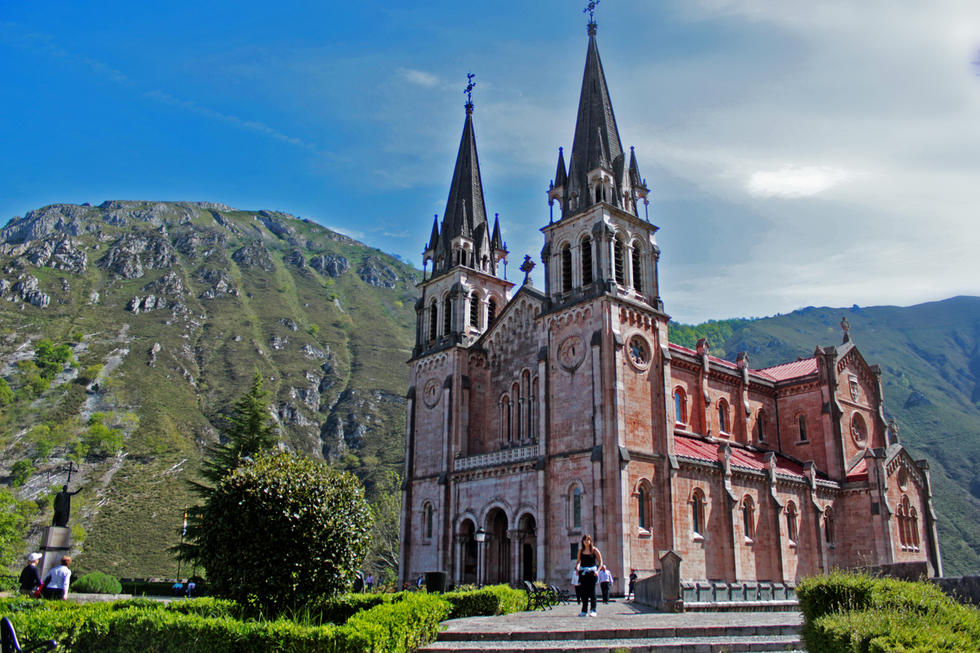
A Christian chapel was the first construction inside the cave and it was ordered by King Alfonso I The Catholic (739-757) as a memorial for the battle of Covadonga. Originally the Holy Cave chapel was wooden, until it and everything it contained, including the image of the Virgin, jewels and goblets, were lost in the fire of 1777. The image, which is there today, dating from the 16th century, was donated by the Chapel of Oviedo Cathedral in 1778 as compensation for the loss of the early Virgin. The Virgin known as The "Santina" is an image of Mary which forms an integral part of the Asturian tradition through history, through word of mouth from generation to generation, and through personal religious experiences. Deeply rooted in the people of this land, it constitutes one of the strongest and most powerful convocational symbols that the Asturians have. Its figure was carved, incarnated, gilded and polychromed from oak in the 16th century. She measures 71.4cm tall, including the pedestal, with a girth of 46 cm at her widest point, and a depth of 21 cm. The current baby Jesus was placed there in 1704. Standing out from her clothing is the mantle that Our Lady wears from her shoulders to her feet. Its colour changes according to the occasion. The normal mantle is a reddish-purple colour with a golden trimming and stamped with simple floral motifs.
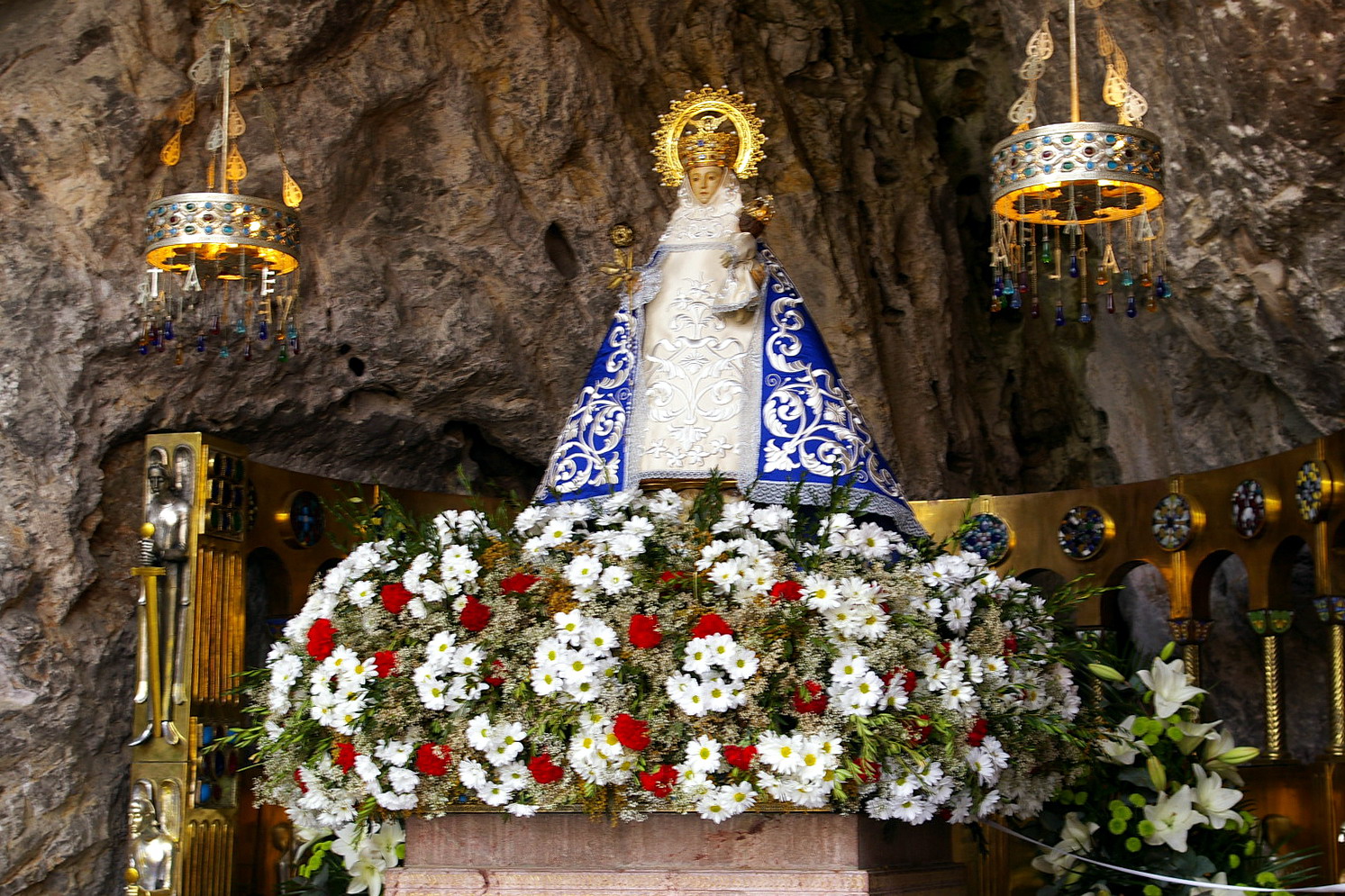
The chapel, which is to one side, was also reconstructed in stone, as it can be seen today. One can also find the tomb of Pelayo in the Cave, in front of the image of the Virgin.
Although he was originally buried in a nearby parish called Santa Eulalia de Abamia, his remains, along with those of his wife Gaudiosa and his sister, were later transferred to the Holy Cave where the tomb of Alfonso I and his wife Hermelinda (Pelayo"s daughter) is also kept, although slightly more hidden.
Behind the cave, in the guts of the mountain, an underground cascade runs free, and it reaches the outside world right underneath the cave, falling some 20 meters down into a natural water pool where pilgrims and visitors throw coins wishing for their dreams to come true.
After heavy rains or when the snow melts on the mountains the streams bulges with water and the sound of the waterfall is so intense that from inside the cave you can’t hear anything but the water crashing against the rocks and falling into the pool.
At one side of the pool you can find the seven-spout water fountain. Many Asturians still try to respect the tradition by going to Covadonga and drinking from all seven spouts before their marriage, just in case.
To access the cave there is a staircase leading up from the pool. It is not uncommon to see people going up the stairs on their knees because of a religious promise. The other way to access the cave is passing by the stone lions and following the road all the way up to the Basilica. Once at the Basilica there is a small pedestrian path that leads to a 30-metre tunnel carved out of the mountain and which is the antechamber of the Covadonga cave.
Silence and respect are demanded on the visit to the cave, especially when there is a mass on. It is a very similar atmosphere to Lourdes.
Many visitors from different regions and countries come every year to worship “la Santina”. Even Pope John Paul II made a very special visit to the Santina and to the Real Sitio of Covadonga in 1989, visiting also the Picos de Europa on his journey along the Camino de Santiago.
Roberto Frassinelli designed the basilica and the architect Federico Aparici Soriano erected it between 1877 and 1901. In 1777 a fire destroyed the old chapel that was by the Covadonga cave and it was then decided that they would build an eve more impressive structure. There was an initial project that was finally rejected because of its high costs and the opposition of local priests.
The definitive project was approved and launched by King Alfonso XII almost one century after the destruction of the original chapel. The initial project by Ventura Rodriguez with a classic design was finally replaced by the actual structure, which has a Romanesque style.
The original idea from the actual construction came from a German painter called Roberto Frassinelli, “el Alemán de Corao” that lived in the region. Architect Federico Aparici did the technical project, based on Frassinelli´s idea. The building sits over a large terrace and it has three different aisles. In the plaza in front of the basilica there is a 4 ton bell from 1900, a bronze statue of King Pelayo from 1964 and an obelisk from 1857, which according to the legend, stands at the place where King Pelayo was crowned.
The Covadonga Basilica was inaugurated on September 7th 1901, and Pope Leon XIII gave it the dignity of Basilica. It was built using pink limestone from the surrounding mountains. By the entrance portico there are two sculptures representing the two regional bishops started and finished the works. The inside of the basilica is famous because of its simplicity with just some decorative elements placed on the ceiling of the Basilica. Beside the high alter there are two large paintings of Madrazo and Carducho that represent the Battle of Covadonga and the proclamation of Pelayo as King of Asturias.
Beneath the high altar there is a "pit" with the relics of San Melchior and Pedro Poveda. To the left there is an altar dedicated to San Melchior, the only Asturian Saint, canonized by Pope John Paul II in 1989. Due to their economical contributions to the building of the basilica, flags from all South American countries are permanently shown.
Despite the many fires, the Museum of Covadonga still keeps very valuable and unique pieces. The crown of the Virgin of Covadonga is a very valuable piece of jewellery created by Felix Granda Buylla in 1918. It is made of gold with diamonds, rubies, sapphires and pearls. This crown is only used during the Covadonga celebration day, on September the 8th.
At the museum we can admire drawings from the basilica construction project done by the architect Ventura Rodriguez (the project that was rejected and replaced by the actual structure) as well as an impressive painting of King Pelayo. Pieces of jewellery, an ivory Christ from the XVI century donated by King Felipe II and ancient liturgical clothing together with other pieces of ancient art can also be contemplated and enjoyed within the museum. Nearby you will also be able to enjoy some of the most beautiful countryside Spain has to offer with breathtaking views of the Picos de Europa and some of the most beautiful lakes in Spain.
Ver mapa más grande
BEST TIME TO VISIT : ANY TIME OF YEAR
 3
Like
Published at 10:44 AM Comments (0)
3
Like
Published at 10:44 AM Comments (0)
Game of Thrones in Spain: Zafra Castle
Saturday, May 4, 2024
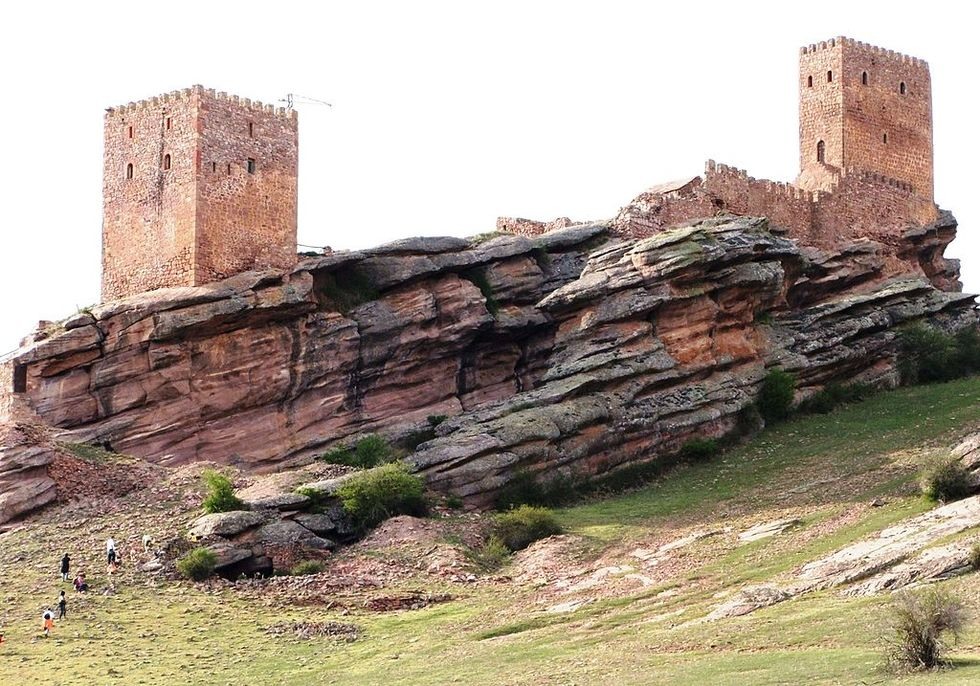
Like something out of a J.R.R. Tolkien fever dream, Spain's Castillo de Zafra sits atop a regal promontory in a setting that may as well be populated with roaming dragons. It is in fact the stand-in for the "Tower of Joy" in season six of Game of Thrones.
Built back around the 12th and 13th centuries, the stunning castle has been passed around amongst the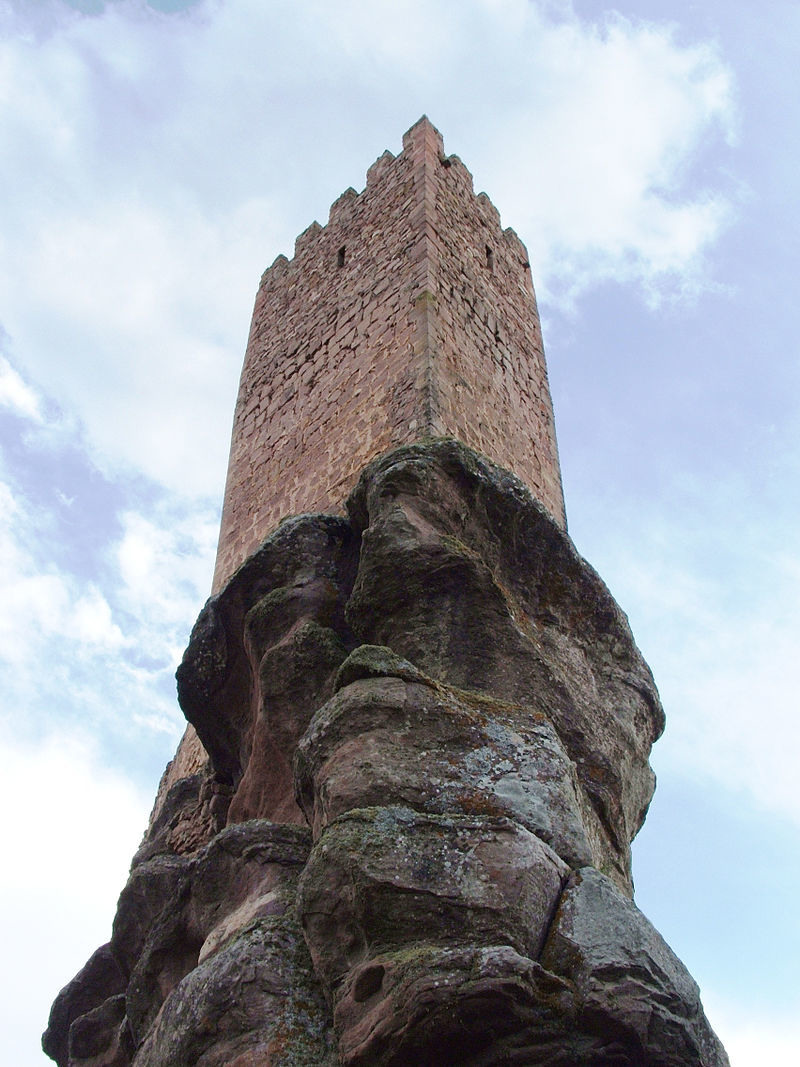 Spanish nobility for hundreds of years. The tall towers of the castle sit atop a massive rock located on what was once the border between Christian and Muslim territories. The flat surface atop the rock is crowned with a high defensive wall that makes accessing the castle inconvenient even for those who live lived there. Spanish nobility for hundreds of years. The tall towers of the castle sit atop a massive rock located on what was once the border between Christian and Muslim territories. The flat surface atop the rock is crowned with a high defensive wall that makes accessing the castle inconvenient even for those who live lived there.
By the 15th century, the castle had come under siege by a Castillian king who was fighting with the then owner of the castle. But unsurprisingly the imposing defence held.
The castle has been owned by a long list of noblemen, some of whom repaired or expanded the grounds. There are even rumours of secret rooms that were carved into the rock beneath the structures. While these have never been found, Castillo de Zafra absolutely looks like the type of castle that would have them.
By the modern day, the towers and buildings had been badly damaged and many were crumbling. But thanks to restoration efforts by the castle's 20th-century owner, Don Antonio Sanz Polo, it once again looks like something out of fantasy. Today the Castillo de Zafra is privately owned and anyone wishing to tour the castle grounds must get permission to enter the premises, and it is said that the only way in is by climbing a ladder. Up the rock. Incredible.
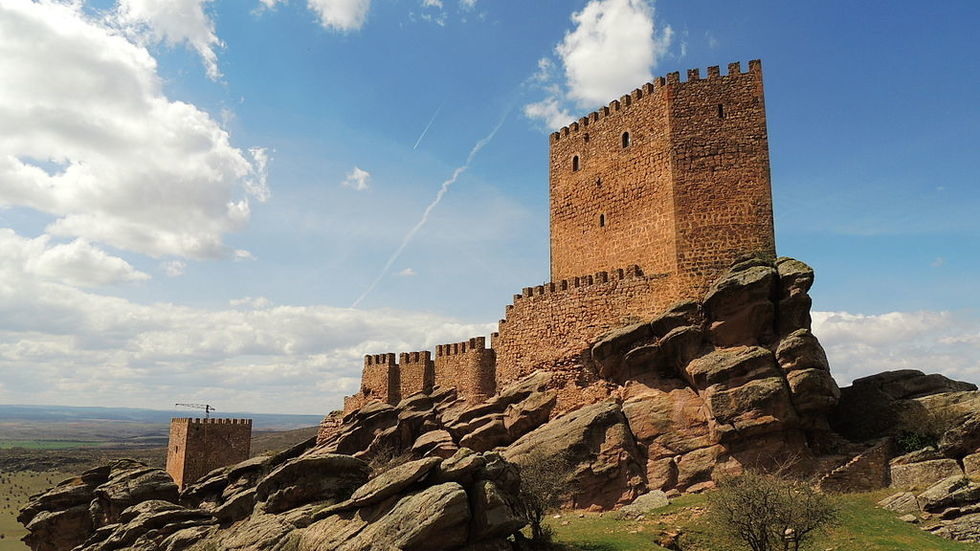
 1
Like
Published at 12:46 PM Comments (0)
1
Like
Published at 12:46 PM Comments (0)
Spam post or Abuse? Please let us know
|
|